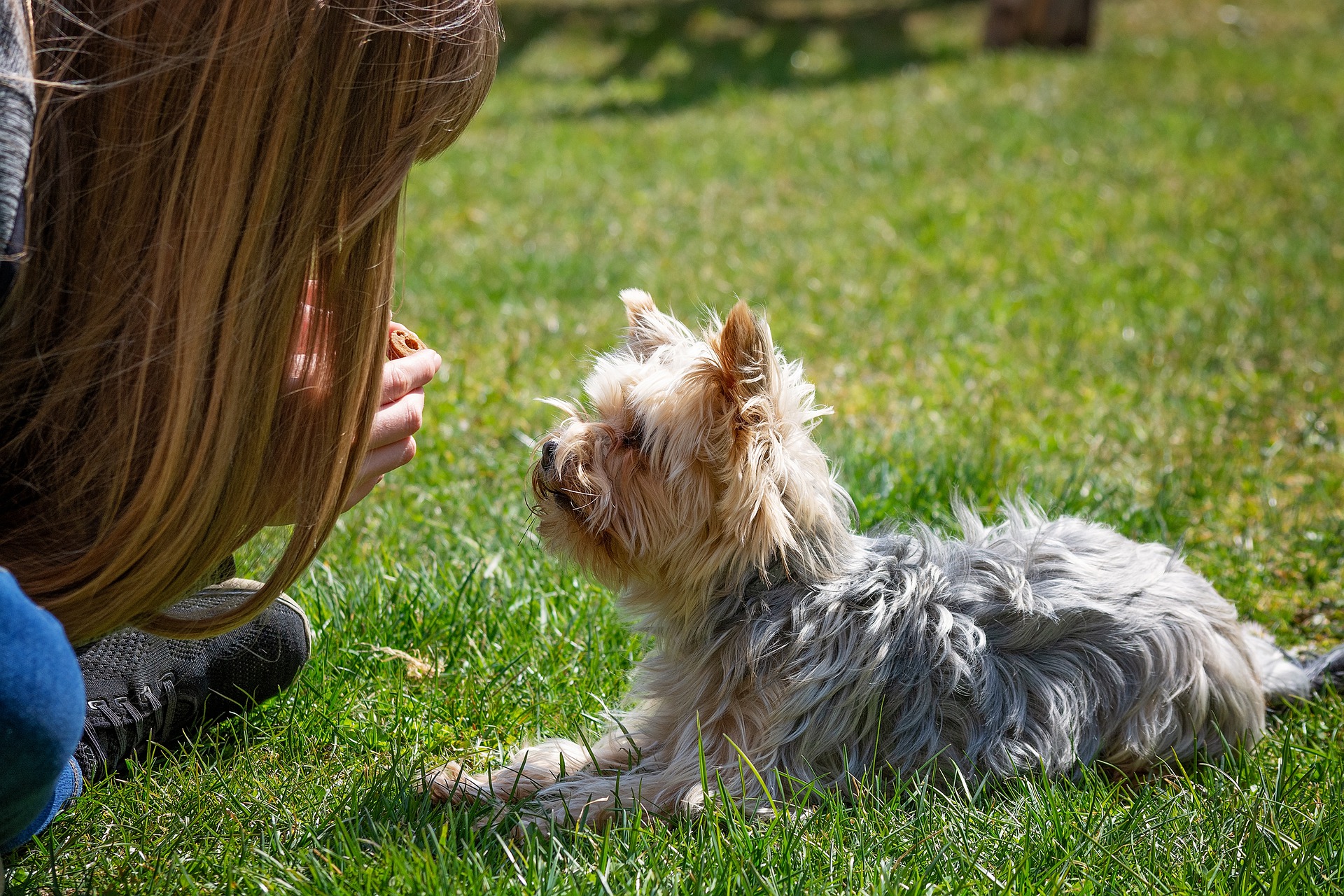When it comes to training your dog, it can be a long road that sometimes feels like you take one step forward and two steps back. However, the good news is that your dog really does want to please you and to does want to understand what is required for good behavior.
Here are some tangible tips for what you can do to encourage a quicker learning curve for your pup.
Canine Good Behavior Tips
- Quality Time: Be intentional about spending time together with your dog each day. During this time, get rid of distractions such as your phone, or the TV. Pet them, snuggle them and play together in addition to training. A close bond will make your dog more eager to please you – not to mention, playing with your dog each day will increase your overall happiness levels as well.
- Start with Simplicity: Commands and behaviors that are too complicated for your dog’s learning levels will only frustrate and confuse you both. Begin with one-word commands and easily-teachable behaviors, like “sit” or “wait”. As your dog grows confident and finds that learning is fun (after all, they get treats and attention when they listen), move on to more complex commands.
- Enrichment Methods: Exercise Fido’s brain with engaging challenges. Enrichment is used both for house pets and zoo animals to keep them from becoming bored and under-stimulated. Feed your dog different treats or snacks than usual, introduce new scents, take a walk on a new path, or feed them with a puzzle toy. Rotating the toys you give them each day will also keep them stimulated.
- Consistency in Training: Training can be difficult sometimes, but it can seem much worse when you don’t remain consistent in what you expect of your dog. If you are training them to sit while you prepare their food, you should not give up on correcting them regardless of how many times they try to stand up or approach you. If you change the rules once, your pup will know that if they misbehave, they will eventually get what they want. Stay strong, be consistent, and don’t give in to those pleading puppy eyes!
- Rewards, Not Punishments: Reward your pup when she performs a behavior you’ve been working on. Doing so creates a positive association between performing the action and receiving lots of love, attention, and treats. You should never use corporal punishment or yell at your dog, as negative reactions only make your dog fearful and less likely to want to listen to you. The goal of training is to teach your dog to want to exhibit good behavior, not fear your reaction when they don’t do it properly.
- Have Fun: Learning doesn’t have to be dull for anyone. Involve your entire family in the process so that your dog understands training and behaviors to be a regular part of the “pack” routine. Show your kids how to perform commands, and play games with your pup as a family. All these actions are easy ways to make the training process fun!
- Forgiveness and Patience: Mistakes and accidents will happen. The most important thing when training is to provide endless forgiveness and patience. Training takes time, and regression is always possible when your household goes through changes or periods of stress. If you take the time to understand and bond with your dog though, you can make the process of building your relationship and trick repertoire much more enjoyable.
Gulf Coast K9 Dog Training is a team of caring professionals dedicated to creating good behavior and obedience in your pet.





